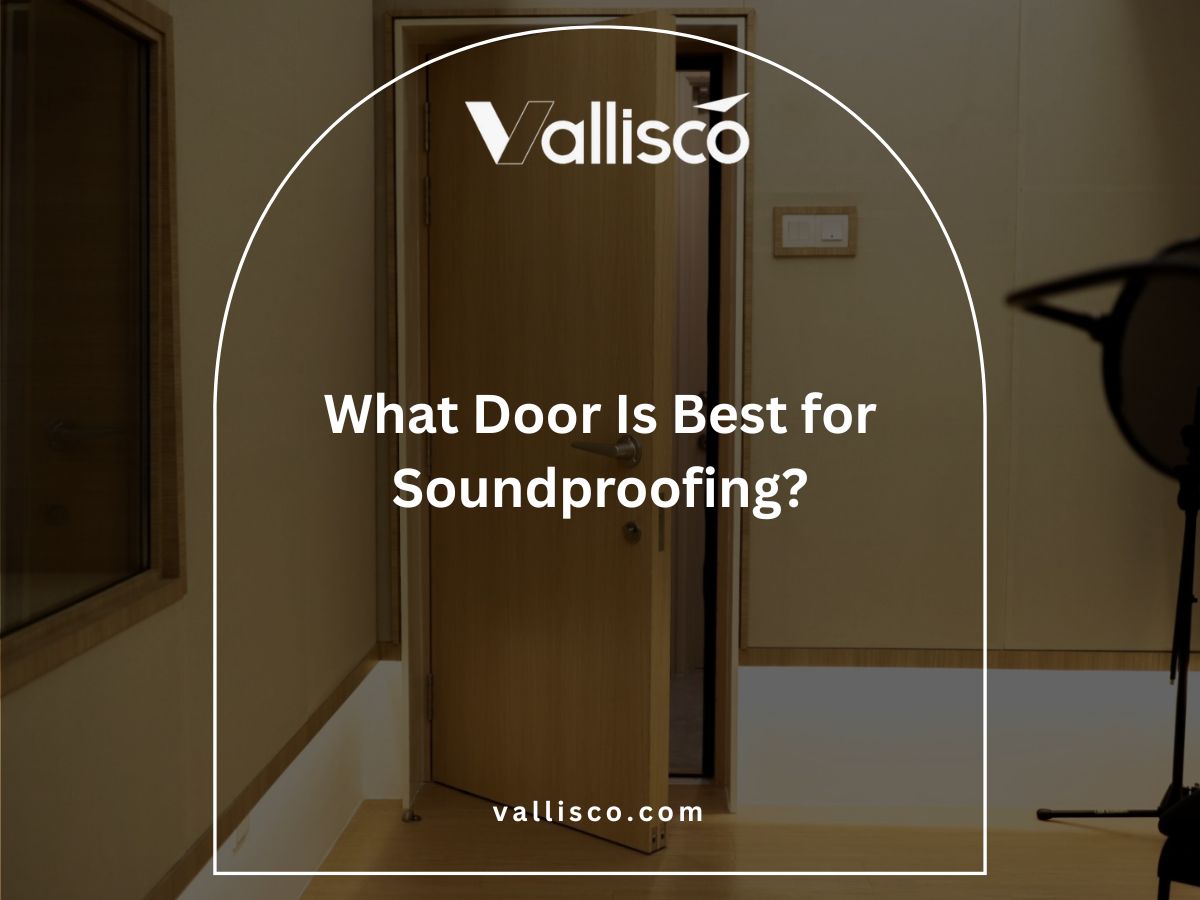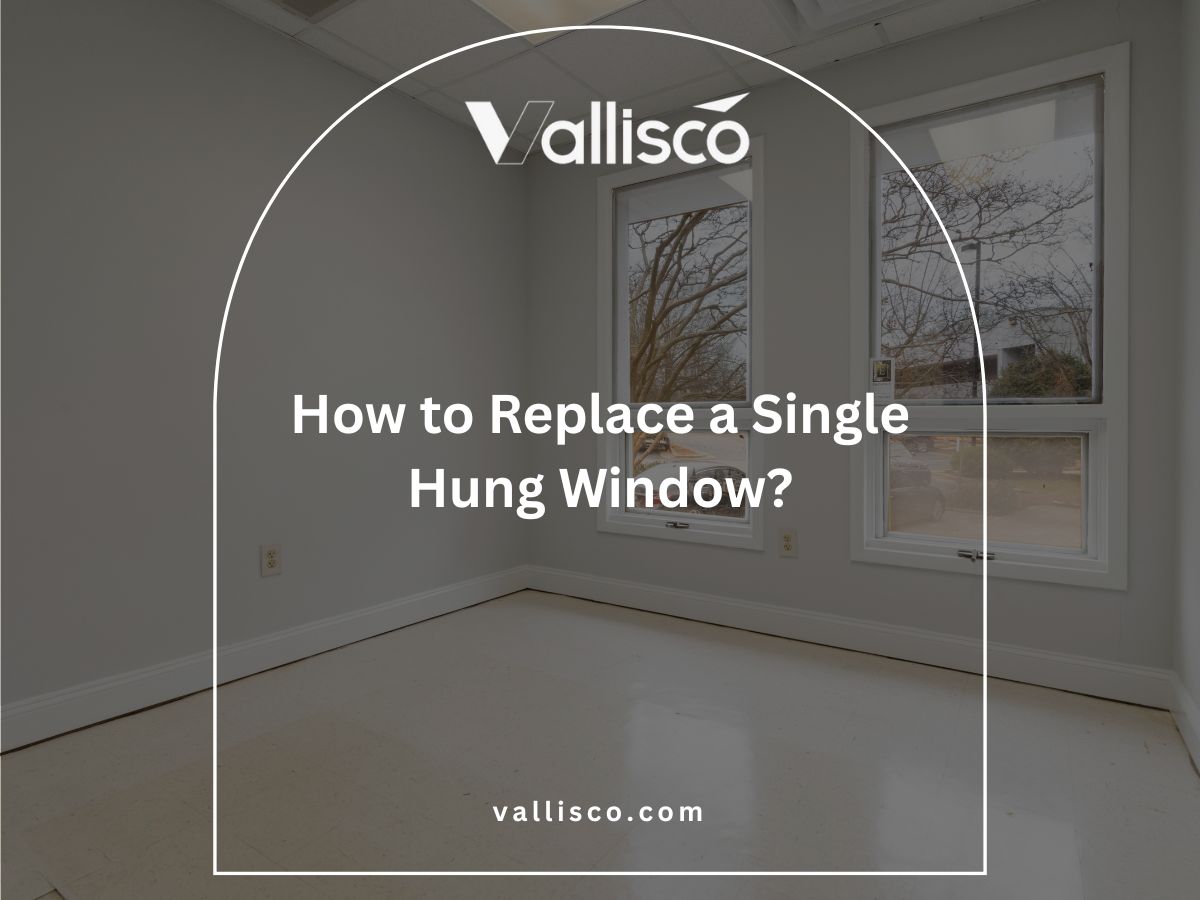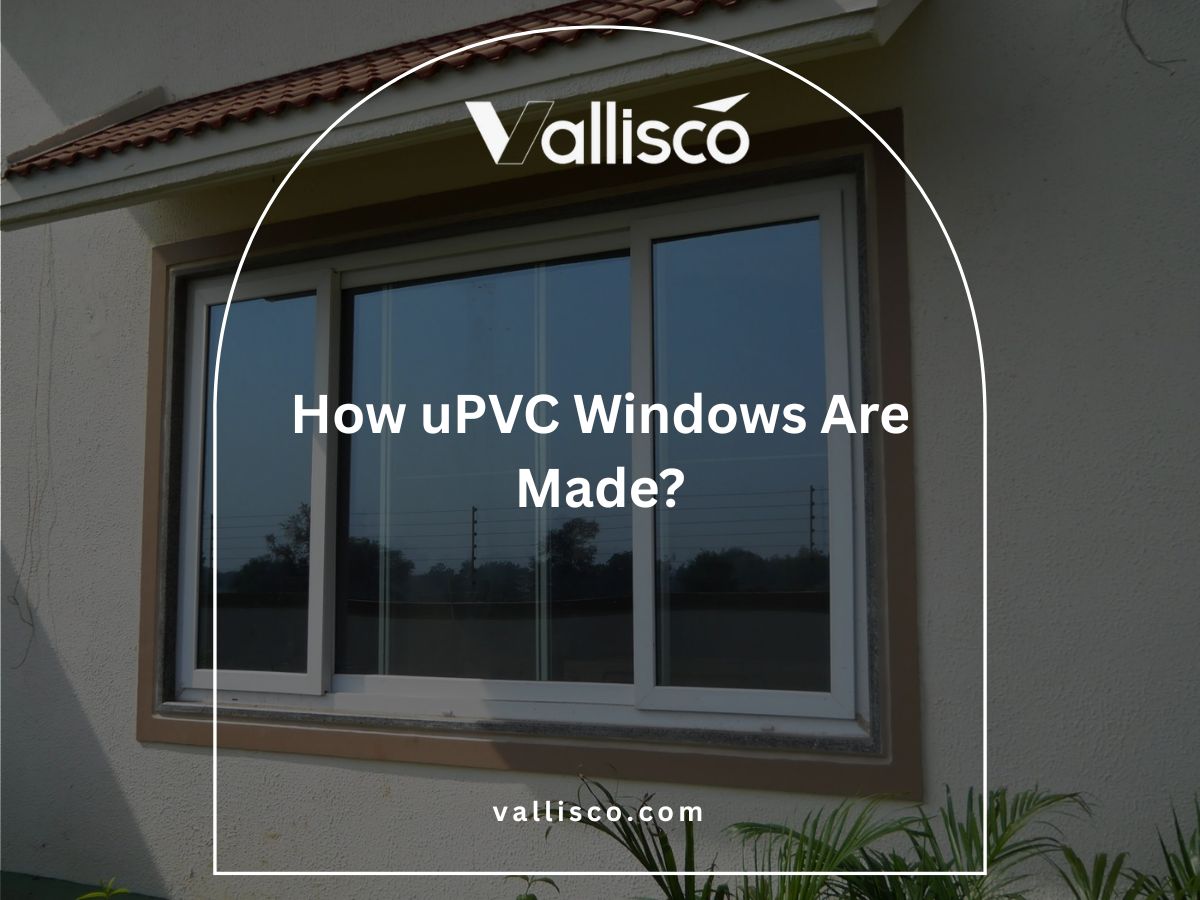I once stayed at a hotel that looked perfect in photos, but the window barely opened and faced a brick wall. That small detail made the whole stay feel stuffy and disconnected.
That experience taught me how hotel windows affect comfort more than most owners realize.
I’ve worked with hotel engineers, window suppliers, and renovation teams. I’ve seen how the right window choice can improve guest satisfaction and lower long-term maintenance.
In this article, you’ll learn about 8 types of hotel room windows. We’ll go over how each one functions, what setting it fits best, and what you should consider before choosing.
If you’ve ever had to deal with guest complaints or costly retrofits, this will save you time.
So, let’s get started!
Quick Comparison Chart
Before we dive deeper, here’s a quick comparison of the 8 hotel window types. This gives you a fast glimpse of what each one offers.
| Window Type | Best For | Key Benefits | Main Drawback | Maintenance |
| Bay Windows | Scenic rooms | Adds space, more light | Higher cost, support | Medium |
| Floor-to-Ceiling | Premium suites | Sleek, bright, upscale | Expensive, structural | High |
| Sliding Windows | Compact rooms | Space-saving, simple | Limited opening size | Low |
| Fixed Windows | Hallways, stairwells | Energy efficient, large | No airflow | Low |
| Casement Windows | Guest rooms | Full open, tight seal | Needs clearance | Medium |
| Double-Hung Windows | Family rooms | Dual open, easy clean | Tracks wear over time | Medium |
| Skylight Windows | Interior or top rooms | Overhead light, space-free | Leak risk if poorly sealed | High |
| Frosted Glass | Bathrooms, shared walls | Privacy, soft light | No view | Low |
That’s the big picture. Now, let’s walk through each window one by one so you can make a clear choice.
1. Bay Windows
Bay windows extend outward from the wall and create a small nook inside the room. They’re made of three panels, usually a large center window and two angled side ones. I’ve always found they give hotel rooms a more welcoming feel, especially when there’s a good view outside.
Benefits
- Adds Space to the Room: The angled structure creates a ledge or sitting space that makes the room feel bigger and more usable. It’s often used for seating, storage, or small decorative setups.
- Improves Air Flow: The side panels often open, giving guests better control of fresh air without needing to open the entire unit. This can be helpful in rooms where central air isn’t always consistent.
- Boosts Natural Light: Sunlight enters from multiple directions, brightening up the space throughout the day. This helps reduce the need for lights during daytime hours.
- Enhances Guest Experience: Guests often enjoy the added seating area, whether for relaxing, reading, or just looking outside. It adds a cozy feature that improves the feel of the space.
- Offers Visual Impact from Outside: From the street, bay windows give your building a more finished, professional look. This helps your property stand out, especially in crowded areas.
Maintenance Tips
- Check for Seal Failures: Look out for condensation between panes, which may mean the seal has failed and needs repair.
- Inspect Caulking and Flashing: Regularly check the joints and edges for wear, especially where the unit meets the wall.
- Clean on a Schedule: Use a set cleaning plan, especially for upper floors, to avoid long-term buildup that’s harder to remove.
Takeaways
Bay windows add charm and function to hotel rooms and can leave a strong impression on guests. But they come with design and maintenance considerations that are better handled early in your project.
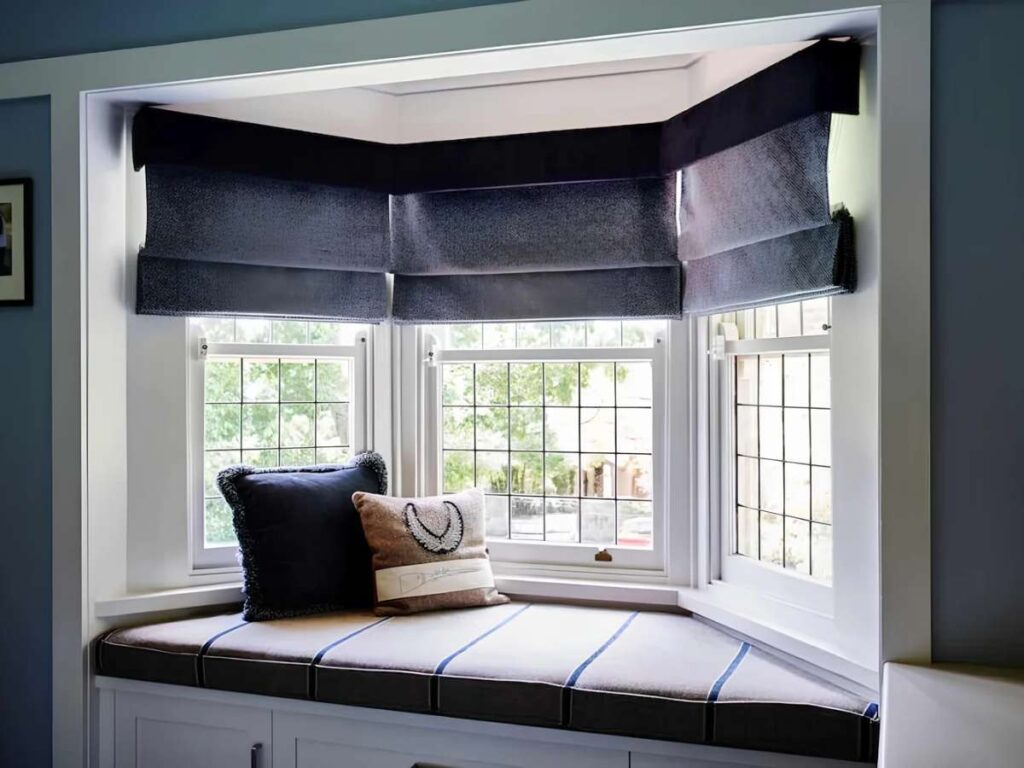
2. Floor-to-Ceiling Windows
Floor-to-ceiling windows are full-height glass panels that stretch from the floor slab to the ceiling beam. They create a seamless view and often serve as both window and wall. I once walked into a hotel room with this type, and the sense of openness changed the entire mood of the space.
Benefits
- Maximizes Outdoor Connection: These windows create a strong visual link between inside and outside, making the room feel more open and connected to the surroundings.
- Elevates Room Aesthetics: The clean lines and full-height design bring a sleek, modern look. They work especially well in high-end or contemporary hotel styles.
- Improves Room Value Perception: Full glass walls often give the impression of a premium experience. That helps justify higher rates in rooms that may otherwise be mid-range.
- Increases Natural Light: These windows let in a large volume of daylight, reducing the need for artificial lighting. They also improve mood and guest satisfaction in well-designed settings.
- Design Flexibility: Can double as balcony doors or pair with fixed glass panels for a seamless look. Ideal for suites with outdoor access or mixed-use layouts. If you’re considering this window, Vallisco offers hotel window solutions that combine smart design, reliable performance, and long-term value.
Maintenance Tips
- Check for Glass Movement: Over time, large panes can shift slightly in the frame. Regular inspections help prevent cracks or leaks.
- Inspect for Water Intrusion: Floor joints and ceiling seals are common failure points. Make sure flashing and sealants are in good condition.
- Use Anti-Streak Cleaning Tools: Smudges and streaks show more on large glass surfaces. Train cleaning staff to use the right tools for better visual results.
Takeaways
Floor-to-ceiling windows are best for hotels that want to offer dramatic views or create a sense of openness in premium rooms. But they can be costly to install and require strict planning to manage structural loads and energy efficiency.
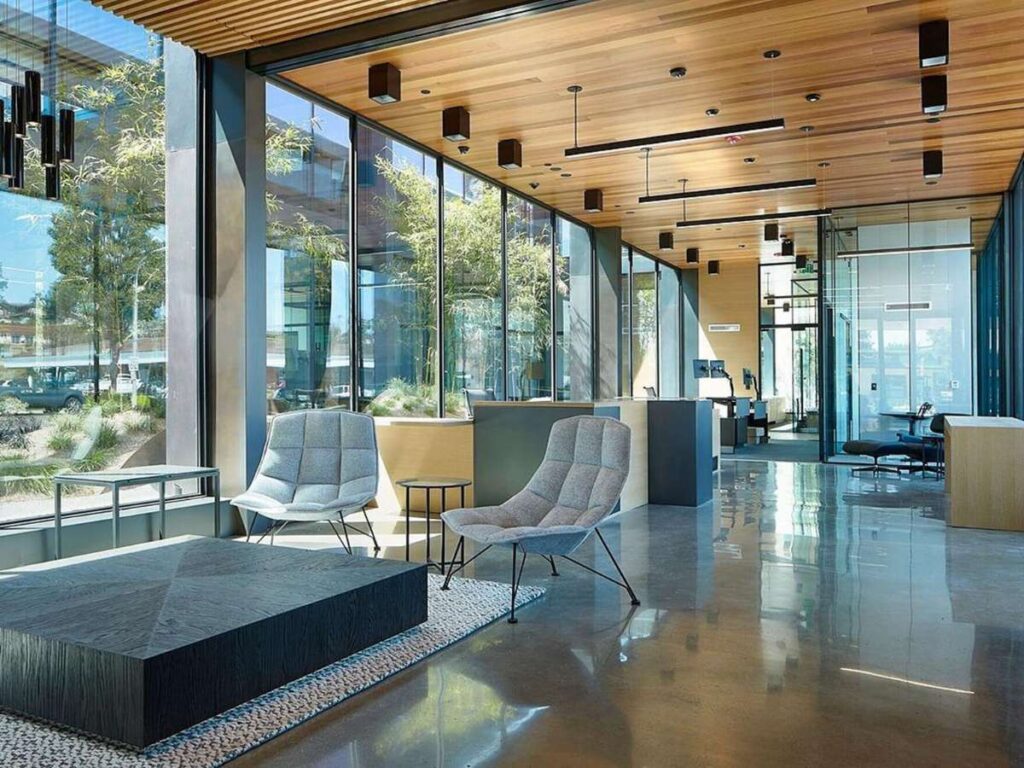
3. Sliding Windows
Sliding windows open by moving one panel horizontally over the other. They’re simple, functional, and take up no extra space inside or outside the room. I’ve installed them in hotel rooms where space was tight, and they’ve always been easy to manage for both guests and staff.
Benefits
- Saves Interior Space: Since these windows slide instead of swinging open, they work well in compact areas. This gives you more freedom with furniture layout and drapery.
- Easy to Operate: No cranks or handles, just a smooth glide along the track. This makes them simple for guests of all ages to use without confusion.
- Cost-Effective Option: Sliding windows generally have fewer parts, which keeps the upfront cost lower. They’re a good fit for larger hotel projects or refurbishments on a budget.
- Blends with Modern Designs: The low-profile frame creates a clean look. It’s an easy match for minimalist or contemporary hotel interiors.
- Supports Airflow in Tight Areas: When space is limited, these windows still allow for basic ventilation. They work well in side rooms or smaller guest spaces.
Maintenance Tips
- Clean the Track Regularly: Dust and debris build up fast in the bottom rail. A quick vacuum and wipe-down can prevent drag or sticking.
- Clear Out Drainage Channels: Built-in weep holes must stay open to let rainwater drain. Blockages here can lead to moisture buildup inside.
- Test the Lock System: Make sure the latch lines up and clicks securely. This avoids gaps that affect insulation and security.
Takeaways
Sliding windows are best for hotels that need simple, functional windows that are affordable and low-maintenance. But, I want you to know that they’re less suited for rooms where you want full-height views or high-end visual features.
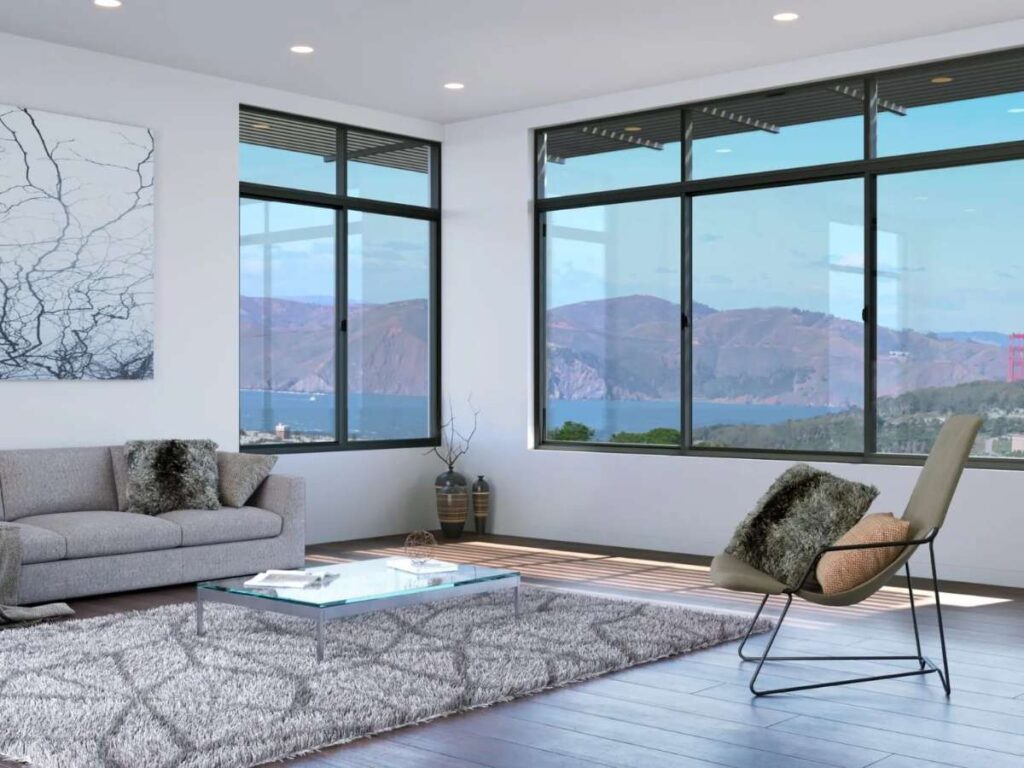
4. Fixed Windows
Fixed windows don’t open, they’re made to provide a view, light, or design element without ventilation. They’re fully sealed and usually larger than operable types. I’ve reviewed window layouts where fixed glass worked best for guest areas that needed light but didn’t need airflow.
Benefits
- Better Energy Efficiency: Since they’re sealed tight with no moving parts, fixed windows have fewer air leaks. That helps reduce heating and cooling loss in each room.
- Works in Hard-to-Reach Areas: Fixed windows can be placed high on walls or in tight corners where operable windows won’t fit. They’re often used in stairwells, bathrooms, or above beds.
- Allows for Bigger Sizes: With no hardware or moving sections, these windows can be made much larger. That helps frame wide views or bring in more natural light.
- Improves Building Security: Guests can’t open fixed windows, which can be a plus for higher floors or child-friendly rooms. It also helps meet safety standards in some hotel types.
- Clean, Simple Look: The frameless or low-profile appearance blends into many designs. It works well in modern spaces or mixed-material facades.
Maintenance Tips
- Inspect Seals and Glazing Edges: Look for cracks or aging around the perimeter. A failed seal can lead to fogging or energy loss.
- Clean Both Sides Carefully: These large panes may require special access tools, especially on upper levels. Keep both interior and exterior glass on a set schedule.
- Watch for Condensation: Since there’s no airflow, monitor nearby surfaces for trapped moisture. If fogging happens, it may be time to check insulation levels or the window unit itself.
Takeaways
Fixed windows are best for areas where airflow isn’t needed, but you still want light or a view like hallways, lobbies, or high-level guest rooms. But they won’t work well in places where guests expect to open a window for fresh air or ventilation.
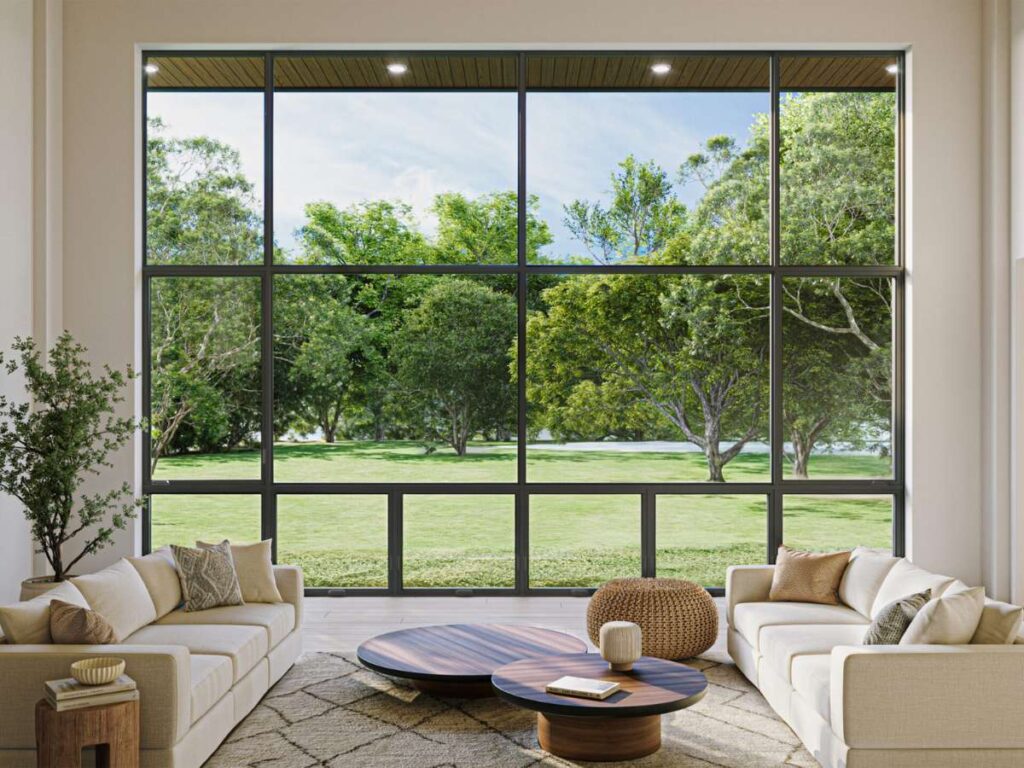
5. Casement Windows
Casement windows are side-hinged and open outward like a door, usually with a hand crank or lever. They’re great when you want full window openings without breaking up the glass with frames. I’ve specified casement windows in builds where ventilation and tight sealing were top priorities.
Benefits
- Strong Seal Against Weather: When closed, the sash presses tightly against the frame. This helps reduce drafts and water leaks in windy or wet climates.
- Good for Hard-to-Reach Spots: The crank handle makes them easy to open above countertops or behind furniture. This improves guest comfort without needing to shift room layout.
- Unobstructed Glass Area: Since there’s no center frame, guests get a full, clear view. This makes them ideal for rooms overlooking landscapes or city skylines.
- Great Ventilation Control: You can open the window fully to direct breezes inside. It’s useful for rooms that rely on natural airflow in mild-weather zones.
- Secure Locking System: Most casement windows have multi-point locks that secure tightly along the frame. That adds to both safety and insulation.
Maintenance Tips
- Lubricate Hinges and Crank Mechanism: Moving parts need oiling to stay smooth and quiet. Dry or stiff cranks can damage the gears over time.
- Inspect Weatherstripping: The seal around the frame wears down with use. Replace it if you notice increased noise or air drafts.
- Watch for Warping: In some climates, the sash may shift slightly with moisture or heat. Regular checks help catch alignment issues early.
Takeaways
I like using casement windows in guest rooms where airflow is important but wall space is limited. Just keep in mind they open outward, so you’ll want to avoid placing them where they could block walkways or balconies.
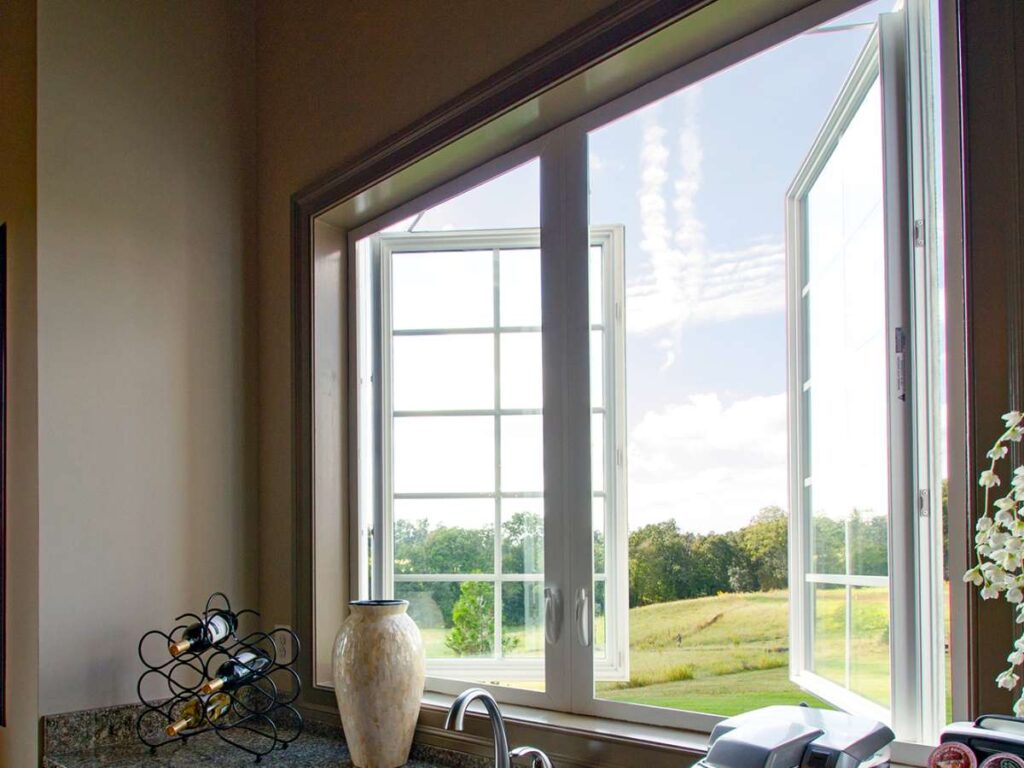
6. Double-Hung Windows
Double-hung windows have two sashes that slide up and down inside the frame. Both can open, giving more flexibility than a standard single-sash design. I’ve walked through hotel properties where this style made everyday use easier for both cleaning staff and long-stay guests.
Benefits
- Flexible Ventilation: Opening both sashes allows warm air to escape through the top while cooler air enters through the bottom. This helps maintain airflow without overusing AC.
- Safe for Families and Upper Floors: You can keep the lower sash locked and only open the top. This reduces fall risk in rooms with kids or high balconies.
- Works with Traditional Styles: The design pairs well with older or boutique hotel architecture. It keeps the original look while updating the function.
- Interior Cleaning Access: Tilt-in features let staff clean both sides of the glass from inside the room. That’s a big time-saver for upper-level floors.
- Simple Replacement and Repair: Parts like locks and balances are easy to find. Local window techs can handle repairs without specialty tools or long lead times.
Maintenance Tips
- Keep Tracks and Sashes Clean: Dust and debris in the frame can cause sticking. A quick wipe every few weeks keeps movement smooth.
- Check the Tilt Function: Some tilt latches loosen over time. Make sure both sashes lock back into place properly after cleaning.
- Inspect Balances and Springs: If sashes don’t stay up on their own, it could be a sign of worn-out balance systems. These are common wear items to monitor.
Takeaways
Double-hung windows are a good fit for hotels that want classic looks and easy day-to-day function. You’ll get flexible airflow and guest-friendly safety, but just know the tracks can wear faster in heavy-use areas.
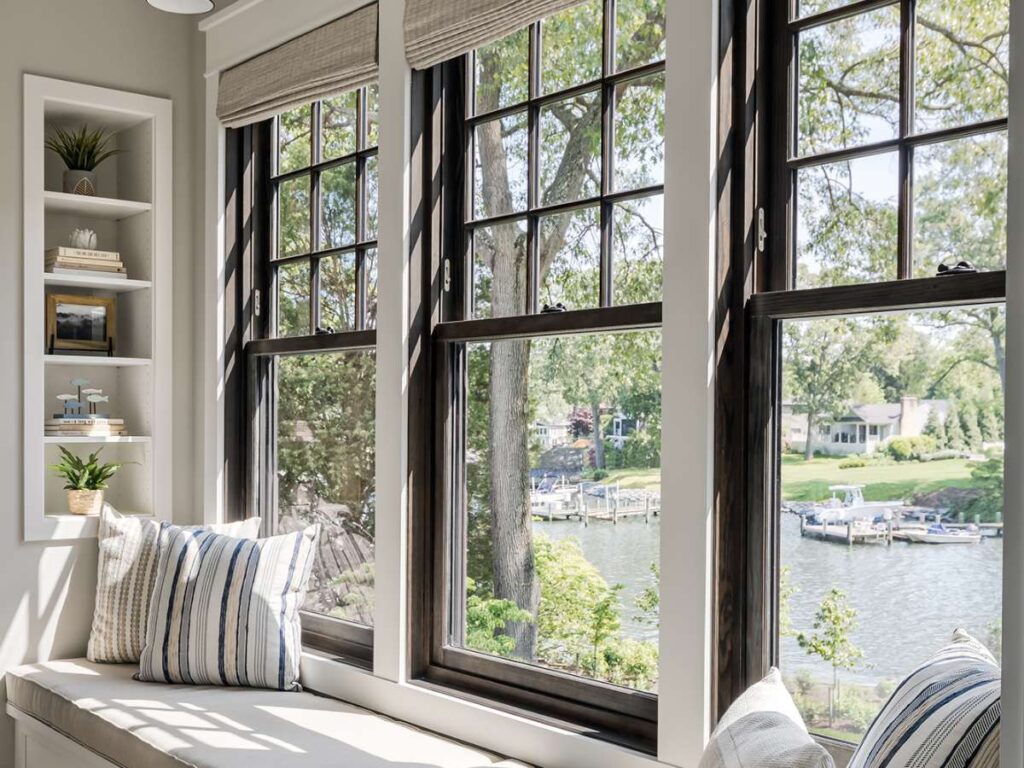
7. Skylight Windows
Skylight windows are set into the roof and bring light in from above. They’re often used to brighten up spaces where regular wall windows aren’t practical. I’ve stayed in hotels where the skylight made a small room feel bigger and less boxed in, something your guests will definitely notice.
Benefits
- Brings in Overhead Light: Skylights provide natural daylight from above, which helps light reach deeper into the room. This is especially helpful in rooms with limited exterior wall space.
- Frees Up Wall Area: Since they’re mounted on the roof, you can use walls for beds, furniture, or art without blocking light or airflow. That gives you more layout flexibility.
- Creates a Sense of Openness: Light from above makes ceilings feel higher. Even small rooms can feel more spacious and comfortable to guests.
- Improves Guest Experience: A view of the sky, stars, or tree canopy adds something special. It’s the kind of detail guests tend to remember and talk about.
- Can Be Operable for Ventilation: Some skylights can open to let hot air escape. This helps reduce heat buildup in upper-level rooms or loft-style suites.
Maintenance Tips
- Check for Leaks Around the Frame: Since skylights are roof-mounted, water intrusion is a common issue if flashing or seals wear down. Look for stains or moisture after storms.
- Clean Exterior Glass Regularly: Dirt and leaves can build up over time and block light. Schedule cleanings, especially for hotels near trees or in dusty areas.
- Inspect Opening Mechanism: If the skylight opens, check the motor (or manual crank) and make sure the closing seal is still tight.
Takeaways
Skylight windows are best for hotels that want to bring natural light into interior or upper-floor rooms without adding wall windows. They add guest appeal but require careful waterproofing and routine checks to avoid leaks.
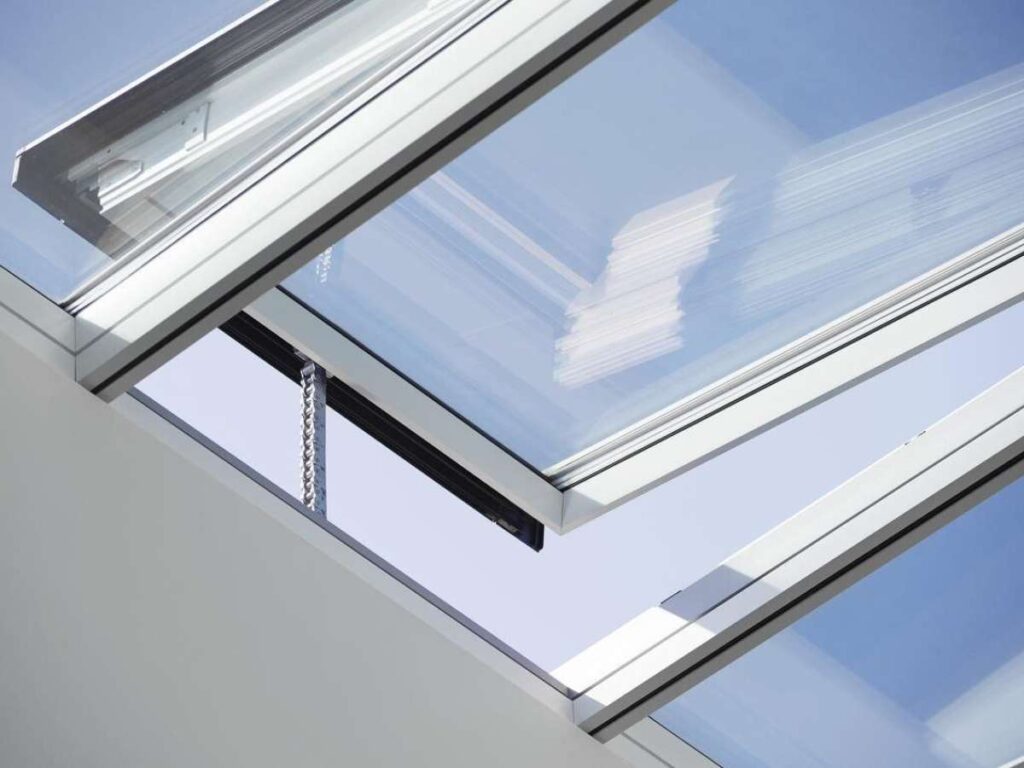
8. Frosted Glass Windows
Frosted glass windows let light through while blocking visibility, offering privacy without full blackout. They’re common in hotel bathrooms, stairwells, or areas that face neighboring buildings. I like using them in spots where you still want daylight but can’t compromise on guest privacy.
Benefits
- Provides Full Privacy: The frosted surface blurs visibility, so guests feel secure without needing to close curtains or blinds. It’s ideal for restrooms or windows facing close neighbors.
- Allows Natural Light: These windows still let in daylight, which helps brighten small spaces like bathrooms and hallways. That means fewer lights running during the day.
- Reduces Glare: The matte finish softens direct sunlight. This helps reduce eye strain and keeps the room cooler during peak sun hours.
- Low Visual Distraction: Unlike blinds or patterned glass, frosted windows give a clean, minimal look. That makes them a good fit for modern hotel interiors.
- Limits Exterior View In: At night, even when the light is on inside, frosted glass prevents clear views from the outside. It adds peace of mind for guests staying on lower floors.
Maintenance Tips
- Clean With Non-Abrasive Cleaners: The etched or coated surface can scratch easily. Use soft cloths and gentle glass cleaners only.
- Check for Film Peeling (if applied): Some frosted glass is created using window film. Over time, this can bubble or peel and may need replacing.
- Inspect Edges for Chips or Wear: Since these are often used in bathrooms or near utility areas, edge damage can happen with regular use.
Takeaways
Frosted glass windows are best for hotel areas that need both light and privacy, like guest bathrooms or shared corridor windows. They’re easy to maintain but can’t provide views, so they’re not suited for rooms where scenery is part of the experience.
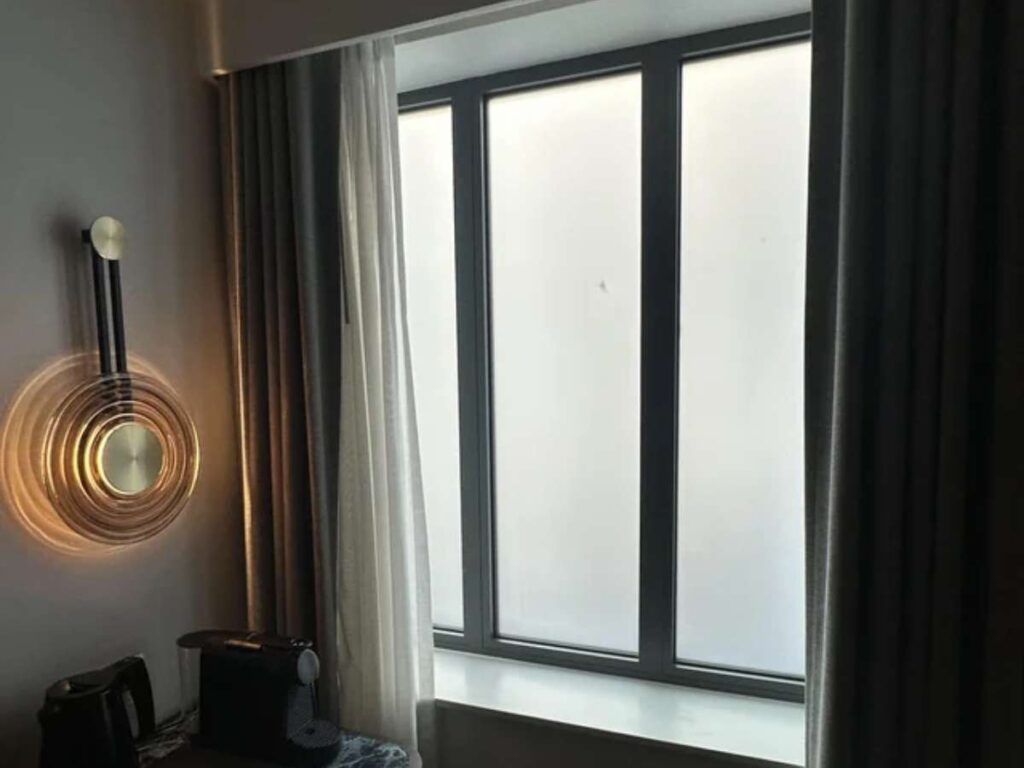
3 Tips To Consider When Choosing The Right Hotel Room Windows
I’ve worked with hotel teams who picked windows based only on looks, and they ended up redoing work months later. The right choice comes from balancing style, safety, and function. If you’re in the planning stage, here are three things worth thinking about before locking in your order:
- Tip#1 Window Type: Guest needs change depending on the room. A skylight might work in an attic suite, but not in a ground-level unit facing the street. Think about who will use the space, how often they’ll open the window, and what matters most, light, air, or privacy.
- Tip#2 Local Codes and Climate: Building codes and weather conditions vary from place to place. Some areas require stronger glass, storm protection, or minimum ventilation. Working with a supplier like Vallisco helps you choose compliant options from the start, reducing delays and costly design changes.
- Tip#3 Ease of Maintenance: Windows on upper floors or in tight spaces should be easy for staff to reach and clean. Simple locking systems and tilt-in features can cut labor time. Always factor in upkeep, not just appearance and cost.
Conclusion
Windows matter more than most people think. I’ve seen what happens when they’re done right, and when they’re not.
This guide gives you eight solid options to compare, with honest pros, limits, and uses.
Go back to any section that fits your current project needs. Whether it’s guest rooms, corridors, or stairwells, there’s something here for every area.
Contact Vallisco today to make sure your window choices support your long-term goals!
Discover More Options
For more helpful content, explore our collection of recommended reads:
Still haven’t found what you’re looking for? Don’t hesitate to contact us. We’re available around the clock to assist you.



